Indoor air quality significantly impacts your overall well-being, influencing everything from daily energy levels to the quality of your sleep. Many busy homeowners and apartment dwellers overlook the hidden pollutants that circulate within their living spaces, unaware of the simple, sustainable solutions available. You spend a substantial portion of your life indoors, making the air you breathe at home a critical factor in your health. Improving your indoor air quality is a practical step toward creating a healthier, more comfortable living environment. This guide explores how incorporating specific air-purifying plants can naturally enhance your home wellness, leading to better sleep and a cleaner atmosphere.

The Silent Threat of Indoor Air Pollution and Your Sleep
Your home, a sanctuary of comfort, often harbors unseen threats to your health in the form of indoor air pollutants. Everyday items like furniture, carpets, cleaning products, and even paint release volatile organic compounds, or VOCs, into your air. These chemicals, along with mold spores, dust mites, and pet dander, degrade your indoor air quality, potentially leading to a range of health issues. Headaches, fatigue, respiratory problems, and skin irritations are common symptoms of poor indoor air. More insidiously, these pollutants disrupt your sleep patterns. A consistent assault on your respiratory system can make restful sleep elusive, leaving you feeling groggy and unwell. Addressing indoor air quality is not merely about cleanliness; it directly impacts your capacity for deep, restorative sleep and overall daily function.

The Science of Green Air: How Plants Improve Your Home Wellness
For decades, scientists have explored natural methods to combat indoor air pollution. One groundbreaking discovery came from NASA’s Clean Air Study in the late 1980s. Faced with the challenge of filtering toxins from spacecraft air, NASA researchers found that common houseplants effectively remove significant amounts of airborne pollutants. The study identified several plants capable of absorbing VOCs like formaldehyde, benzene, and trichloroethylene from the air. These chemicals originate from sources such as glues, plastics, detergents, paints, and synthetic fabrics, pervasive elements in modern homes.
Plants perform this vital service through a process called phytoremediation. Their leaves absorb gaseous pollutants from the air, which then travel down to the roots. Microorganisms in the soil surrounding the roots then convert these toxins into nutrients for the plant. This natural filtration system works continuously, silently, and effectively to improve your home wellness. While air purifiers require electricity and filter replacements, plants offer a continuous, energy-free solution. Investing in plants provides a sustainable, long-term approach to maintaining a healthier indoor environment, often paying for itself in reduced reliance on mechanical purifiers and improved health outcomes. Think of it as an enduring asset for both your planet and your wallet.

Beyond Clean Air: Plants for Better Sleep and Holistic Well-being
While superior indoor air quality is a primary benefit, plants contribute to better sleep and overall holistic well-being in several other ways. Many air-purifying plants release oxygen at night, which is particularly beneficial for sleep environments. Unlike some plants that predominantly release oxygen during the day, certain species maintain oxygen production in low-light conditions, making them ideal bedroom companions.
Beyond respiration, the mere presence of greenery offers calming psychological benefits. Studies show that natural elements in a living space reduce stress and anxiety, fostering a sense of peace. This biophilic effect translates into a more relaxed state of mind, which directly contributes to falling asleep faster and experiencing deeper, more restorative rest. The gentle visual appeal of plants adds beauty and tranquility to your space, transforming a sterile bedroom into a serene sanctuary. For busy individuals navigating daily stresses, these small, green additions offer a significant return on investment for your mental and physical health. You gain cleaner air and a natural, calming aesthetic that supports your sleep architecture, all from a budget-friendly and sustainable source.

Your Top 8 Air-Purifying Plants for Enhanced Indoor Air Quality and Restful Sleep
Selecting the right plants for your home involves considering their air-purifying capabilities, ease of care, and suitability for various environments, especially your bedroom. Here are eight powerful, low-maintenance houseplants known for their ability to cleanse your air and promote better sleep.
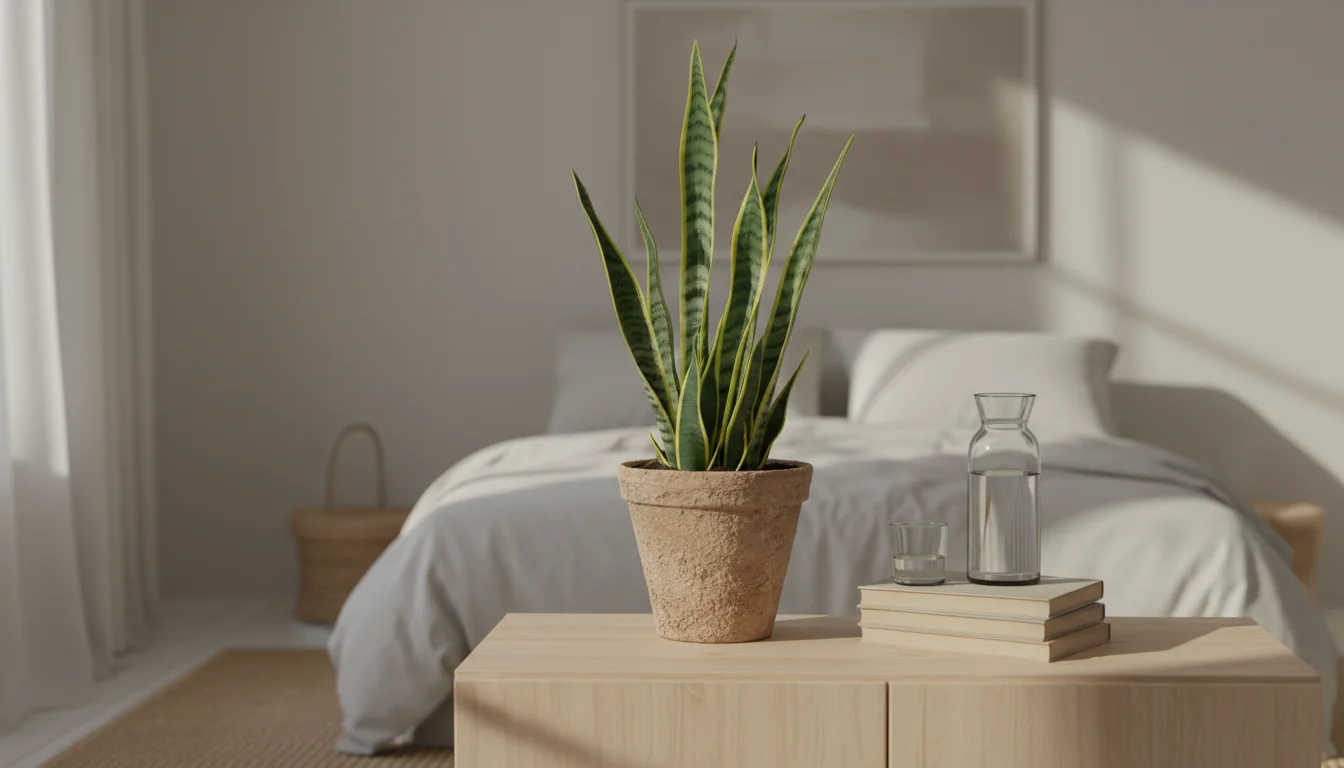
Snake Plant (Sansevieria trifasciata)
The Snake Plant, also known as Mother-in-Law’s Tongue, earns its top spot for a crucial reason: it releases oxygen at night while absorbing carbon dioxide. Most plants perform photosynthesis during the day, taking in carbon dioxide and releasing oxygen, but they reverse this process at night. Snake Plants, however, continue to produce oxygen around the clock, making them exceptional choices for bedrooms. They filter out common household toxins like formaldehyde, benzene, trichloroethylene, and xylene.
Care is incredibly simple, cementing its status as a low maintenance houseplant. It tolerates low light conditions and infrequent watering, thriving on neglect. This resilience makes it perfect for busy homeowners or those new to plant care.

Peace Lily (Spathiphyllum)
Elegant and understated, the Peace Lily boasts lush green leaves and distinctive white flowers that signal purity. This plant excels at removing ammonia, benzene, formaldehyde, and trichloroethylene from the air. Its ability to combat mold spores also makes it a strong contender for improving indoor air quality, particularly in slightly humid environments.
Peace Lilies prefer indirect light and consistent moisture, but they are quite forgiving. When their leaves begin to droop, it signals a need for water, providing a clear visual cue for care. They also humidify the air, which can be beneficial for respiratory comfort, especially during dry seasons.

Spider Plant (Chlorophytum comosum)
Spider Plants are celebrated for their ease of care and remarkable air-purifying capabilities. They effectively combat formaldehyde and xylene, common pollutants found in many homes. Their distinctive arching leaves and ability to produce “spiderettes” make them visually appealing and easy to propagate.
These resilient plants thrive in a range of conditions, tolerating both bright, indirect light and lower light levels. They prefer consistently moist soil but can withstand periods of dryness. Their adaptability and efficiency in filtering air make them an excellent choice for any room, including your bedroom, and they are among the best air purifying plants for bedroom settings due to their benign nature and low maintenance.
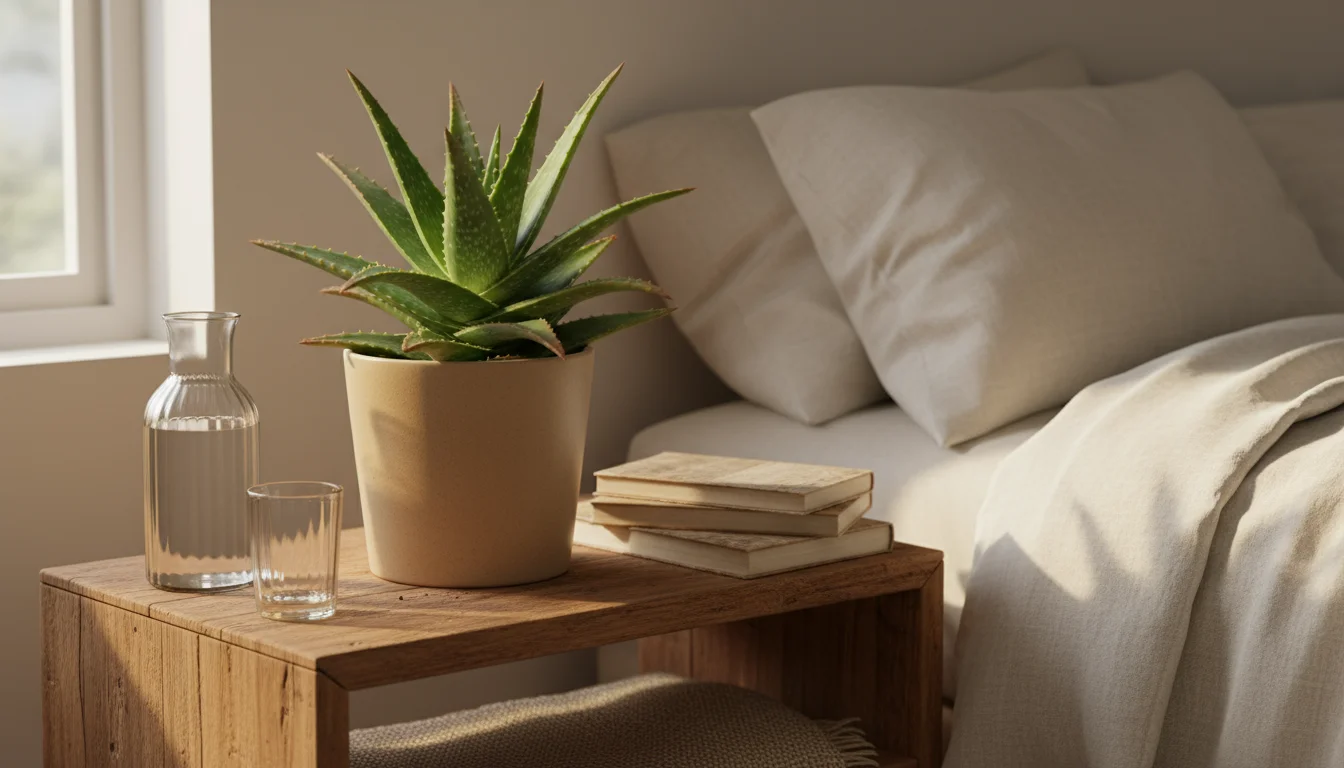
Aloe Vera (Aloe barbadensis miller)
Beyond its medicinal properties for soothing burns and skin irritations, Aloe Vera functions as an impressive air purifier. It works diligently to clear formaldehyde and benzene, commonly found in chemical-based cleaners and paints. Similar to the Snake Plant, Aloe Vera releases oxygen throughout the night, making it an ideal bedroom plant.
Aloe Vera requires minimal attention. It prefers bright, indirect light and thrives on infrequent watering, allowing the soil to dry out completely between sessions. This succulent’s dual benefits for health and air quality offer significant value, making it a wise, sustainable addition to your home.

Boston Fern (Nephrolepis exaltata)
The Boston Fern is a classic, vibrant houseplant known for its feathery fronds and exceptional ability to humidify the air. It is particularly effective at removing formaldehyde and xylene, making a noticeable difference in your indoor air quality. Increased humidity can also alleviate dry skin and respiratory irritation, further supporting restful sleep.
Boston Ferns thrive in high humidity and indirect light. They require more consistent watering than some other plants on this list, needing their soil to remain damp. While they demand a bit more attention, their substantial air-cleaning capacity and aesthetic appeal make the effort worthwhile for creating a healthier, more comfortable bedroom environment.

Gerbera Daisy (Gerbera jamesonii)
Adding a cheerful splash of color to your space, the Gerbera Daisy is more than just a beautiful flower. It actively removes benzene and trichloroethylene, chemicals often brought into your home through dry-cleaned clothes. Like the Snake Plant, it produces oxygen at night, enhancing your sleep environment.
Gerbera Daisies require bright, indirect light and consistent watering, with well-draining soil. They are an annual flowering plant when grown indoors, meaning their blooms will eventually fade, but their air-purifying benefits remain significant. For those who appreciate a touch of vibrant color alongside their home wellness efforts, this plant offers a delightful option.
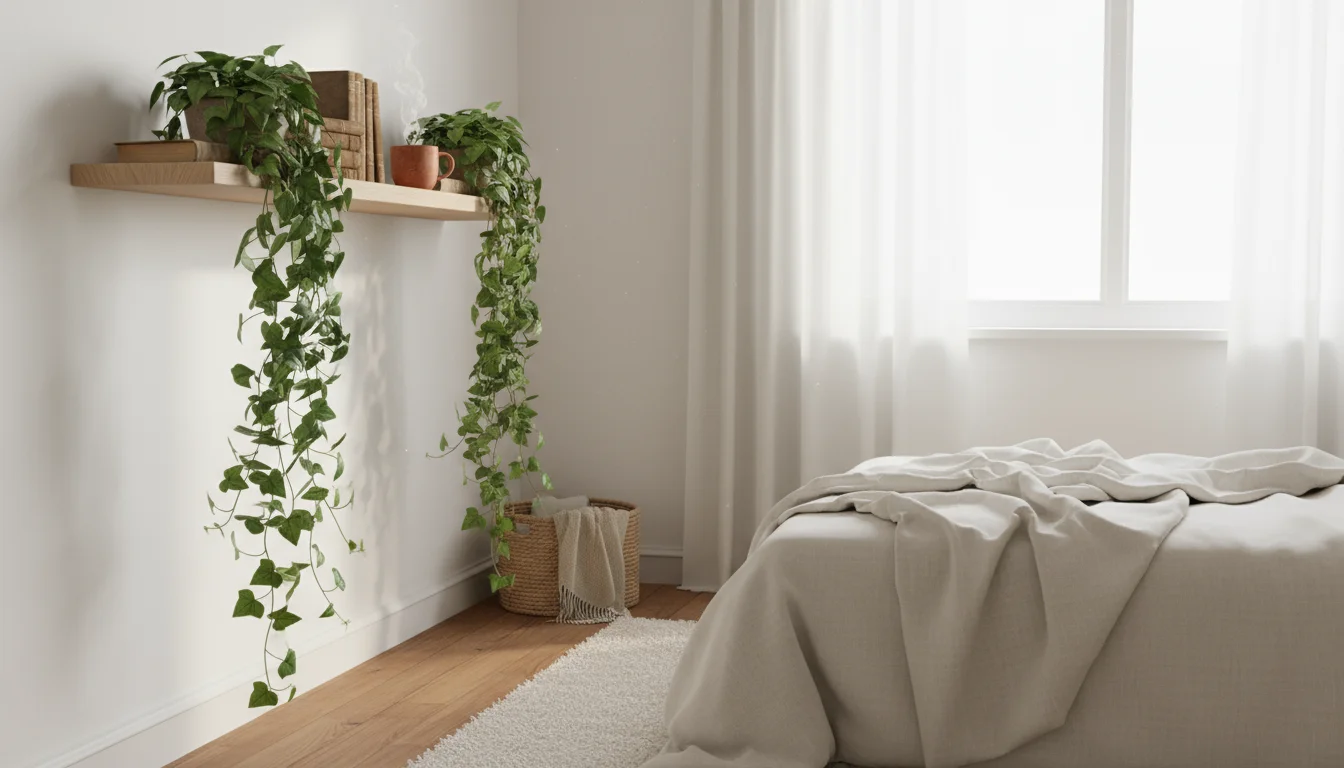
English Ivy (Hedera helix)
English Ivy is a versatile trailing plant that effectively reduces airborne fecal matter particles and filters out formaldehyde, benzene, and trichloroethylene. Its ability to cleanse the air of mold spores makes it particularly valuable for allergy sufferers and those concerned with respiratory health.
This plant thrives in moderate temperatures and can tolerate both bright, indirect light and partial shade. Keep its soil consistently moist but avoid overwatering. You can grow English Ivy in hanging baskets or allow it to trail from shelves, adding a touch of natural elegance while actively improving your indoor air quality.
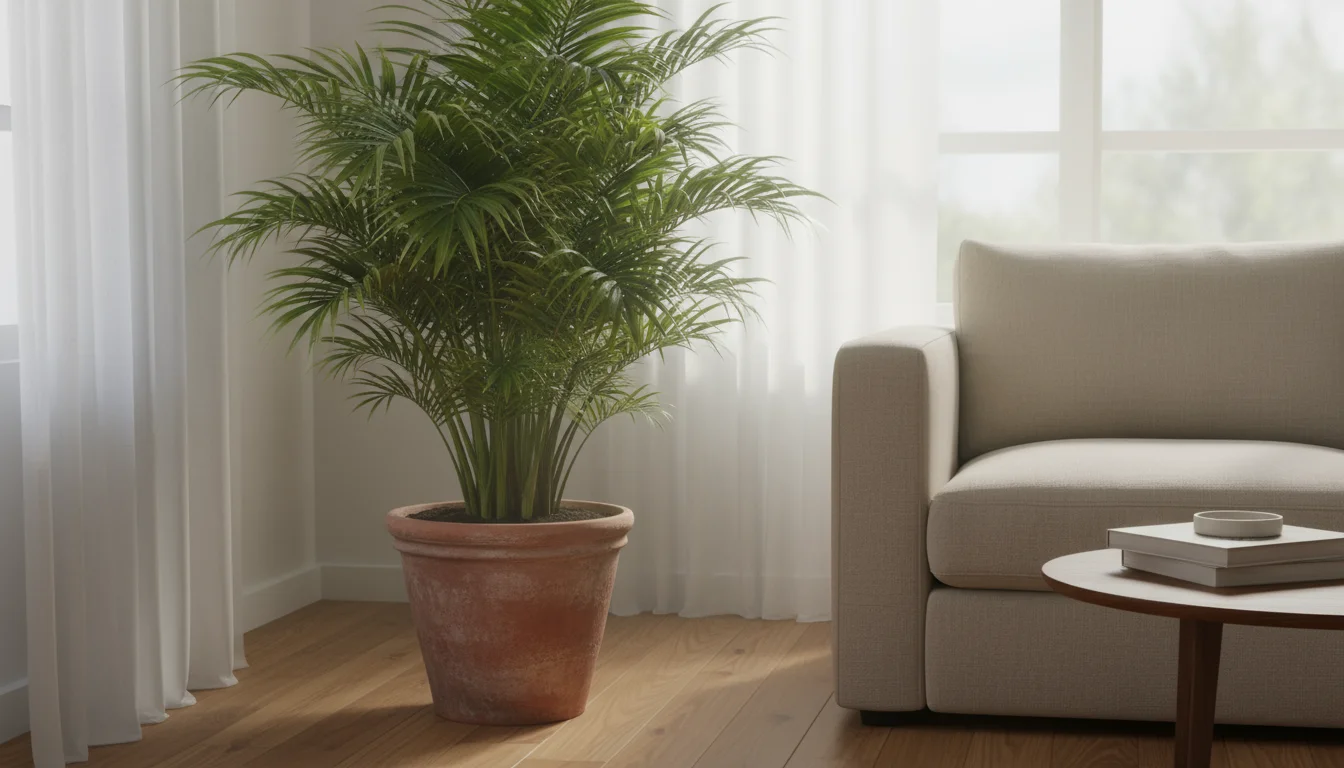
Areca Palm (Dypsis lutescens)
The Areca Palm, also known as the Butterfly Palm, is a tall, elegant plant that significantly improves indoor air quality by removing formaldehyde, xylene, and toluene. It also acts as a natural humidifier, releasing substantial amounts of moisture into the air. This can be particularly beneficial in dry climates or during winter months, helping to alleviate symptoms like dry coughs and irritated sinuses, which often disrupt sleep.
Areca Palms prefer bright, indirect light and consistent moisture, requiring regular watering to keep the soil evenly damp. They can grow quite large, making them an excellent statement piece that simultaneously works hard to purify and humidify your living space.

Nurturing Your Green Investments: Low-Maintenance Care Tips
Even the most low maintenance houseplants require some basic attention to thrive and continue purifying your air. Adopting a simple care routine ensures your green investments continue paying dividends for your home wellness.
- Water Wisely: Most air-purifying plants prefer consistent, but not excessive, moisture. Check the soil moisture by sticking your finger an inch or two deep. Water when it feels dry. Overwatering is a common mistake that leads to root rot. For specific needs, refer to the plant descriptions above.
- Provide Adequate Light: While many air-purifying plants tolerate low light, they perform their best, including air purification, in bright, indirect light. Avoid direct, harsh sunlight unless specifically noted, as it can scorch leaves. Rotate your plants occasionally to ensure even light exposure.
- Ensure Proper Drainage: Always use pots with drainage holes to prevent water from accumulating at the bottom, which causes root rot. A saucer underneath protects your surfaces.
- Dust Leaves Regularly: Dust buildup on leaves hinders a plant’s ability to photosynthesize and absorb pollutants. Gently wipe leaves with a damp cloth every few weeks to keep them clean and efficient.
- Fertilize Sparingly: Most houseplants benefit from a diluted, balanced liquid fertilizer during their growing season, typically spring and summer. Avoid over-fertilizing, which can burn roots. Follow product instructions carefully.
- Monitor for Pests: Inspect your plants periodically for common pests like spider mites or mealybugs. Early detection makes treatment easier and prevents infestations from spreading. A simple solution of insecticidal soap can often resolve minor issues.
Consistent, thoughtful care ensures your plants remain vibrant, contributing actively to your home’s air quality and aesthetic appeal.
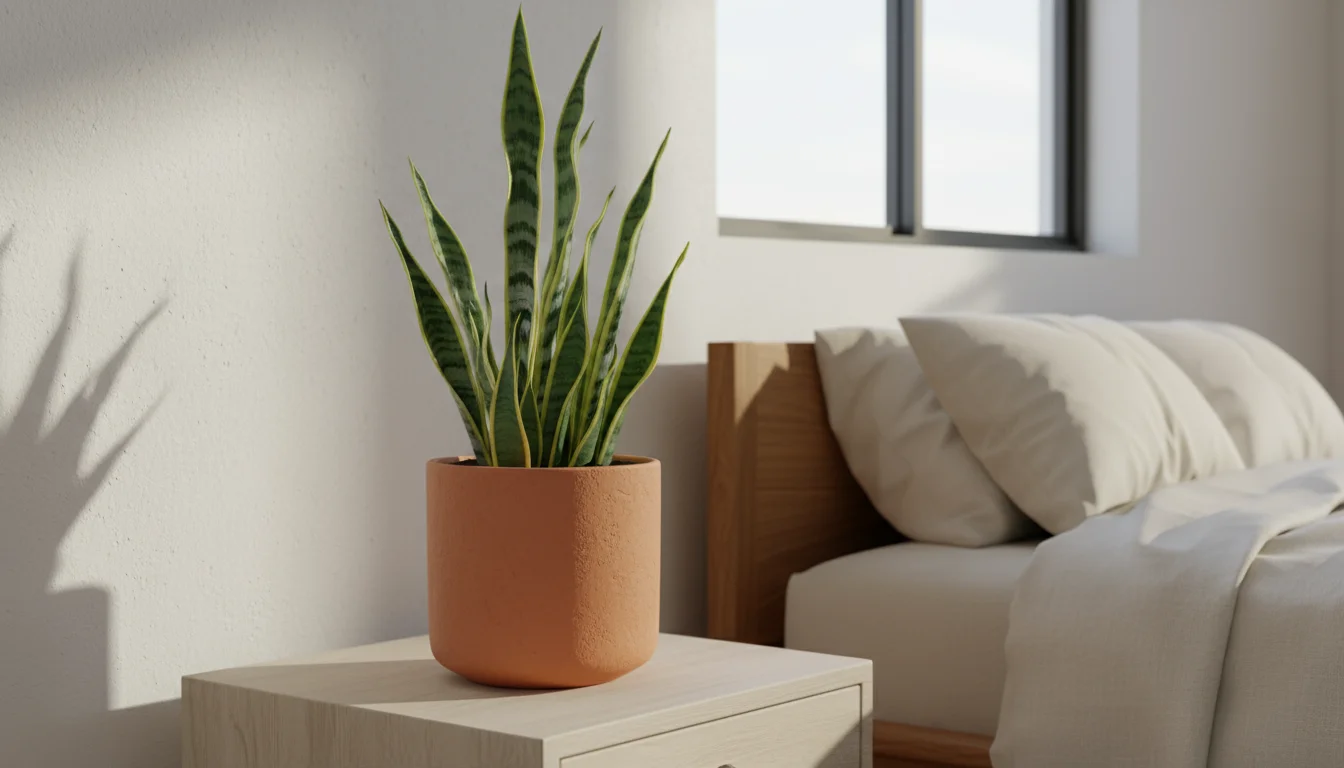
The Sustainable Choice: Long-Term ROI for Your Home and Health
Choosing air-purifying plants represents a smart, sustainable investment that offers tangible long-term returns for both your finances and your well-being. Unlike electric air purifiers that consume energy and require expensive filter replacements every few months, plants are a one-time purchase with ongoing, natural benefits. A high-quality electric air purifier can cost hundreds of dollars upfront, plus an additional $50-$100 annually in filter costs and electricity. Over a decade, this translates into a recurring expense.
Consider the cost-effectiveness: a collection of 5-7 air-purifying plants, capable of effectively cleaning the air in an average room, might cost around $100-$200 initially. This initial outlay is largely where the cost ends. Their “fuel” is sunlight and water, renewable resources readily available to you. These green allies continuously work to remove VOCs and other pollutants, improving indoor air quality without a carbon footprint or ongoing utility bills. This leads to a substantial return on investment. You save hundreds of dollars over time compared to mechanical alternatives, while simultaneously gaining the immeasurable benefits of improved health, better sleep, and a more tranquil living environment. You invest in clean air and a greener planet simultaneously, aligning smart economics with sustainable living practices.
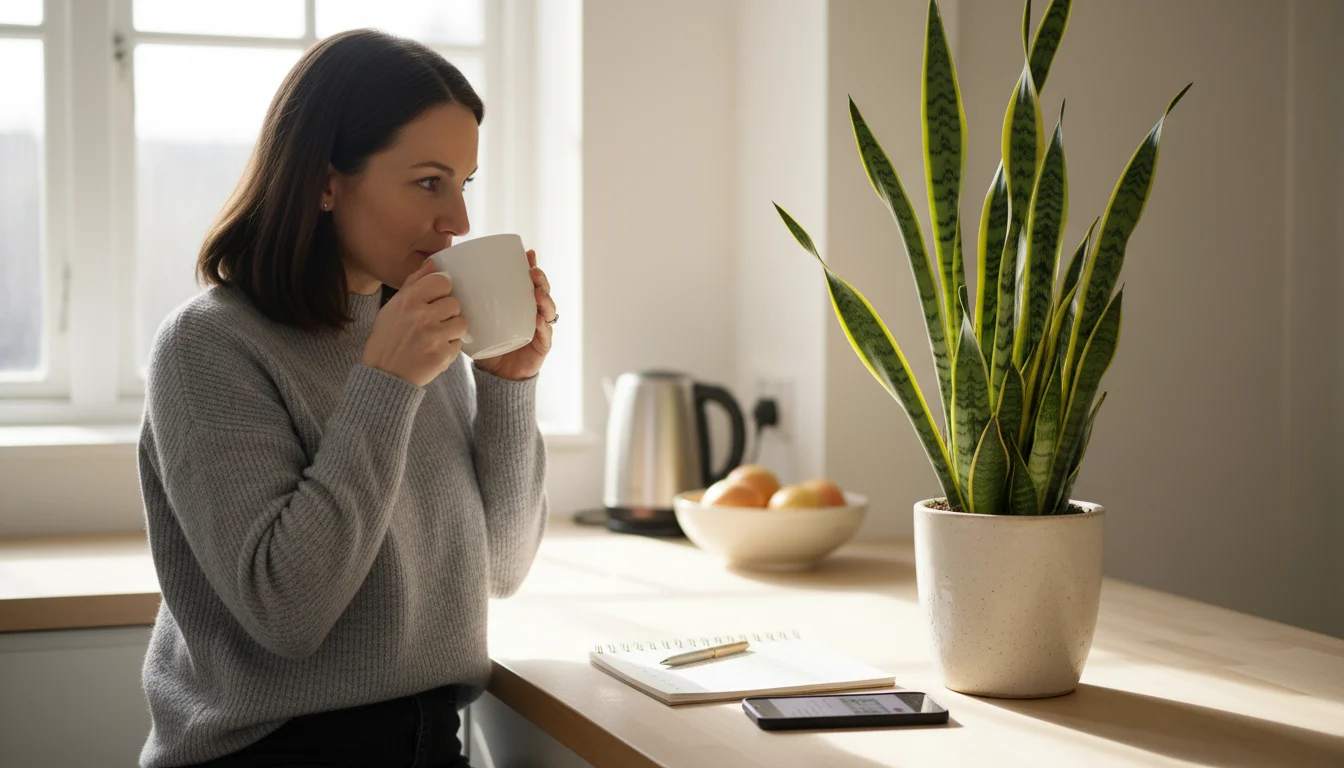
Frequently Asked Questions
How many plants do I need to effectively purify the air in a room?
While there is no universally agreed-upon exact number, the NASA Clean Air Study suggests that one plant per 100 square feet of living space provides noticeable improvements. For a typical bedroom, 2-3 medium-sized plants are generally sufficient to make a difference in your indoor air quality and home wellness. Consider larger plants or more numerous smaller ones for bigger rooms.
Are these plants safe for pets?
Many popular houseplants, including some air-purifying ones, can be toxic to pets if ingested. The Peace Lily and English Ivy, for example, are toxic to cats and dogs. The Snake Plant and Aloe Vera are mildly toxic. Spider Plants are generally considered non-toxic. Always research the specific plant’s toxicity to your pets before bringing it home. If you have curious pets, consider hanging plants or placing them in inaccessible areas.
Can plants completely replace an electric air purifier?
Plants effectively remove a range of airborne toxins, contributing significantly to indoor air quality. However, they are generally less efficient at capturing microscopic particles like dust, pollen, and pet dander compared to high-efficiency particulate air (HEPA) filters in electric purifiers. For severe allergies or respiratory conditions, a combination of plants and an electric air purifier offers the most comprehensive approach to home wellness. For general air quality improvement and sustainability, plants are a powerful and economical choice.
How do I know if my indoor air quality is actually improving?
While you might not have laboratory equipment at home, you can often notice improvements in your well-being. A reduction in respiratory irritation, fewer headaches, and more restful sleep are common indicators. You might also find your home feels fresher and less stuffy. For a more objective measure, consider using an affordable home indoor air quality monitor, though the subjective benefits are often quite compelling.
What if I have limited space? Can I still benefit from air-purifying plants?
Absolutely. Many of the best air purifying plants for bedroom settings, like the Snake Plant and Spider Plant, grow well in smaller pots or can be placed on shelves. Hanging baskets are an excellent space-saving solution for plants like English Ivy and Spider Plants. Even a single well-placed plant makes a positive impact on your home wellness. Prioritize plants known for their compact growth or trailing habits if space is a primary concern.


Leave a Reply